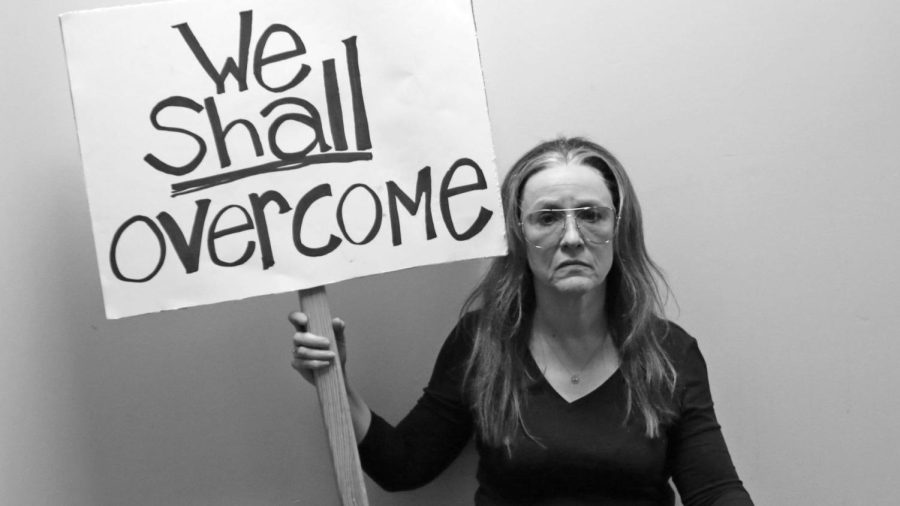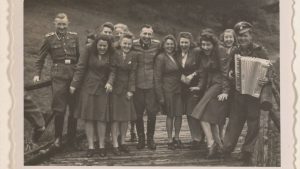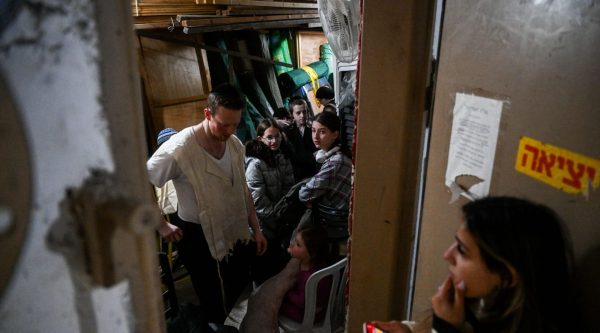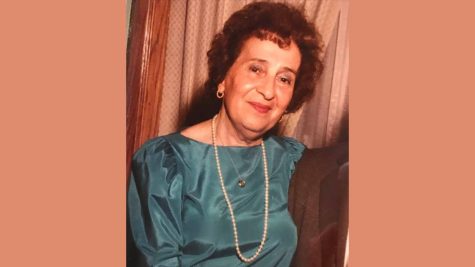Review: ‘Gloria’ explores life, legacy of a feminist icon
Kristen De Broux, who was slated to play Gloria, bowed out because of health concerns
Photos by Greg Lazerwitz
Published June 8, 2023
Gloria Steinem has been a public figure since the 1960s, but there is much to learn and admire about her personal history in “Gloria: A Life.” The play by Emily Mann is fascinating and inspiring in the current production by the New Jewish Theatre.
Steinem began a career as a journalist in the 1960s and became one of the best-known figures in the second wave of feminism in the United States. She gained notoriety for writing an exposé for Show Magazine after working undercover as Playboy Bunny. “Fame gave me a voice,” she says in the play, “but I didn’t know how to use it yet. Actually, I didn’t try hard enough. I didn’t know yet what was possible.”
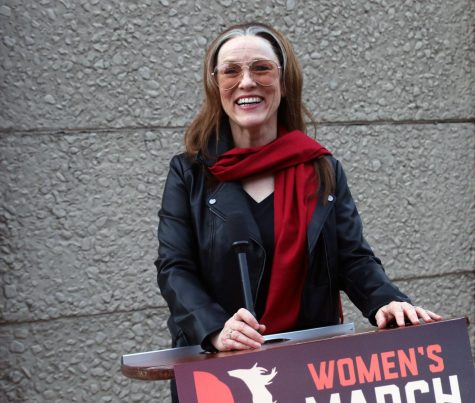
Gloria: A Life
at New Jewish Theatre
Kirsten De
Broux as Gloria Steinem
Photos by Greg Lazerwitz
The seeds for her activism were planted when she covered the 1969 Redstockings abortion speak-out for her column on city politics in New York Magazine. For the first time, she saw woman after woman being taken seriously for telling her personal truth about a female experience.
She was not yet ready to write about her own abortion, though she speaks about it movingly in the play. She came to understand she was complicit in the patriarchy’s humiliation of women because she had internalized its refusal to recognize women’s equality.
Raising women’s consciousness to achieve equality became her mission. She combined her passions for journalism and activism when she participated in the founding of Ms. Magazine.
Embarrassed by the privilege fame brought her, Steinem is quick to recognize lesser-known women who helped raise her own consciousness. “The truth is, I learned feminism from black women,” she says. Two of them, Dorothy Pitman Hughes and Florynce Kennedy, are portrayed with great admiration. So is Wilma Mankiller, principal chief of the Cherokee Nation, whom Steinem calls her mentor.
The sections on Steinem’s personal life contain surprises. Her first career ambition was to dance her way out of Toledo, Ohio, by becoming a Rockette. A recurring subject is Steinem’s relationship with her mother, who suffered from mental illness. In one of the most affecting scenes, Steinem recognizes the price her mother paid for the sacrifices she made for her daughter.
As Steinem reports in the forward to the printed text, the play’s origin was a friend’s suggestion that Steinem should turn her life into a one-woman show in which she would play herself. The assignment to write that play eventually fell to Mann, who had an even better idea. Instead of a monologue, she developed a script with a cast of seven.
Steinem provides the narrative continuity in the present. When the story reaches an important incident, Steinem channels her earlier self, and the six ensemble members play all the other parts. The episodes in Steinem’s life make a much stronger impression as dramas than they would have in a monologue.
One of the first sketches with characters depicts a cab ride Steinem shared with two famous writer, Saul Bellow and Gay Talese, when all three are covering the same story. Talese’s condescension toward Steinem is appalling. Director Sharon Hunter portrays this outrage and many others cartoonishly. This shrewd approach does not let wrongdoers off the hook but prevents the action from becoming unbearably sad.
Jenni Ryan deserves enormous credit for accepting the role of Steinem on very short notice. She held a script on opening night but seldom used it. Her portrayal is already solid and insightful. It will surely grow even deeper as Ryan spends more time in the part.
The excellent ensemble includes Summer Baer, Kayla Ailee Bush, Sarah Gene Dowling, Carmen Cecilia Retzer, Chrissie Watkins and Lizi Watt. They switch from one part to another with total assurance and make the most of opportunities to touch the heart.
Hunter stages the play fluidly in the round under helpful lighting by Denisse Chavez on a set designed for flexibility by Fallon Podrazik. The periods Steinem lived through are splendidly evoked by Michele Friedman Siler’s costumes, Amanda Werre’s sound, Katie Orr’s props, and the wigs constructed by Rebecca Mack in consultation with Dennis Bensie.
The play ends with a talking circle. It is not a traditional theater talkback, in which panelists reply to questions from the audience. Instead, the audience is called on to provide the answers. The question from the stage is, “Can you tell us how or if the story we told tonight resonates with your story?” Attendees have a chance to learn from others in a talking circle just as Steinem did at the Redstockings speak-out.



